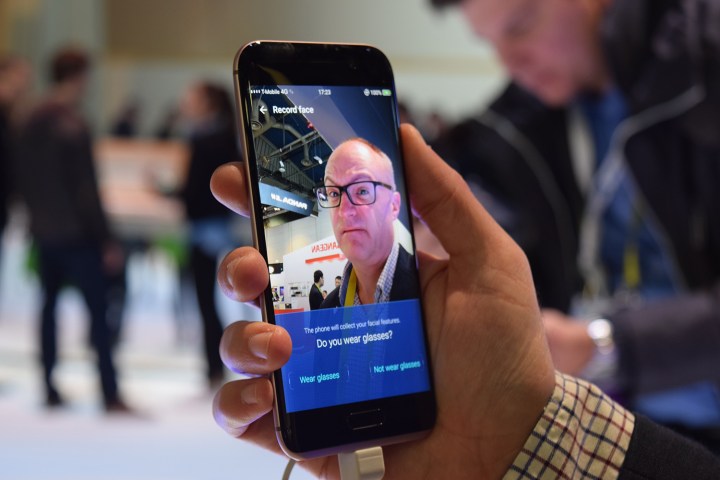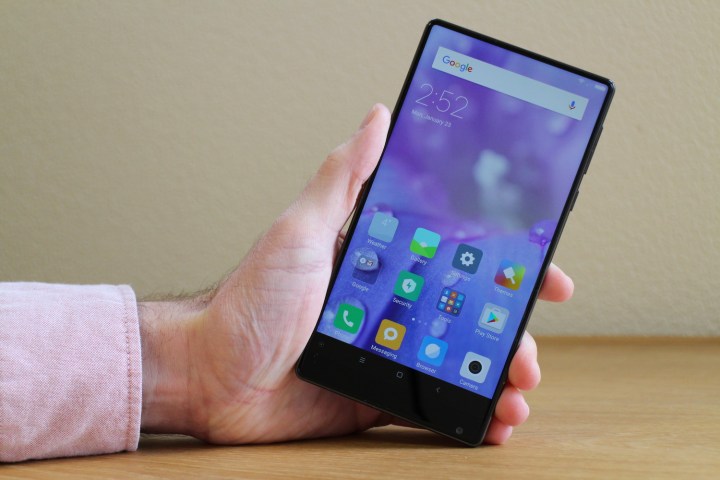
The phones in question aren’t nailed together concepts that’ll never be sold, either. They’re genuine examples of next-generation phone tech that you can buy today. What makes them so futuristic? Both incorporate technology that’s so cutting edge, we haven’t seen it implemented in the same way on any other device. However, there are strong indications big-name manufacturers are working hard to bring the same tech to 2017’s major flagship smartphones.
We’ve seen the future, and you can, too.
China, hot bed of phone innovation?
The Xiaomi Mi Mix and the Honor Magic may be unfamiliar names to many of you, and that’s because you can’t buy either of them through official channels unless you live in China. You can get these futuristic phones through importer services if you’re a real die-hard, and both are currently on sale in China.
Chinese phone manufacturers have been coming up with some exciting devices recently
People complain endlessly that smartphone innovation is dead and all the phones look the same. Ironically, China is often viewed as the worst copycat for taking liberties with other company’s designs, and the amount of iPhone imitators that pop up almost daily borders on the laughable. Look deeper, and China has had the jump on several major mobile technologies adopted by international companies over the past years, from diverse chat app platforms to online video live streaming.
Chinese phone manufacturers have been coming up with some exciting devices recently, too. From the Lenovo Phab 2 Pro’s use of Google Tango to Oppo’s teased hyper fast battery charging technology, Chinese tech companies are innovating fast. You really shouldn’t be shocked that it’s not Apple, Samsung, LG, or another big-name manufacturer that’s leading the latest round of innovation at all.
These two phones are really different
Let’s examine these phones, and why we think they’ve just fallen out of a door pocket in Marty McFly’s DeLorean. The Xiaomi Mi Mix has a 6.4-inch, almost bezel-less touchscreen inside a phone that’s no bigger than the 5.5-inch iPhone 7 Plus. There’s no speaker and no proximity sensor to breakup the expanse, making it look totally unique. We’ve seen borderless screens before — on everything from the Galaxy S7 Edge to the Nubia Z11 — but this time it’s done right. The specially engineered screen curves at the corners, hides a speaker system that is “heard” through the glass itself, and embeds a sonar-like ultrasonic proximity sensor under the glass. The result is a unique, beautiful design, made possible using brand-new technology.
Honor’s lozenge-shape Magic is equally stunning to look at. When you get to handle that ultra-curvy shape, you’ll wonder why all phones aren’t styled in the same way. However, it’s Honor’s use of artificial intelligence which makes it so futuristic. The AI goes beyond Siri and Google Now, integrating itself into the operating system and behaving more like chat bots do in Facebook Messenger. The phone will make helpful suggestions based on your activity, including what movies are playing at a theater close to you or ordering a cab if you’re out late at a bar or club. It even shields lock screen notifications from others, revealing them only to you, because it knows what you look like.
It’s so slick, you’d think Honor had been using such deep artificial intelligence integration for years. Similarly, the Mi Mix makes superb use of its massive, wide touchscreen, plus the audio system behind the screen works so well, it’s easy to forget we’ve never seen this type of display technology before.
The borderless future?
Are we just relying on a crystal ball here, or is there any actual evidence these two phones represent a vision of the future? There’s plenty. Let’s talk about borderless screens first, which is the next step in making screens bigger, without making phone bodies larger and more cumbersome. It’s all about screen-to-body ratio, and the higher the percentage, the better.
It’s all about screen-to-body ratio, and the higher the percentage, the better.
Rumors of a bezel-less Apple iPhone have spread for a while, and the reports are now connected to the iPhone 8, whenever it may arrive. Reports say the new screen is part of a radical redesign, which will transfer the trademark Home button into the screen itself, so the chin of the device can be removed. The iPhone 8 could debut was early as September 2017, which is absolutely thrilling.
The LG G6 is another device where the front of the phone will apparently be mostly screen. LG Display’s new 18:9 ratio panel is “taller” even than the Xiaomi Mi Mix’s unusual 17:9 aspect ratio, which ensures it fills up as much of the phone’s frontage as possible. However, it still has space for Android’s menu and back buttons.
Rumors have connected the Samsung Galaxy S8 with a large, border-free screen, too. The phone might even get a 90 percent screen-to-body ratio. The Mi Mix has a similar ratio, and for comparison, the Galaxy S7 Edge has a 76 percent screen-to-body ratio. That’s the big three manufacturers all connected with rumors about the same technology, on phones that will potentially be released in 2017 or 2018, depending on Apple’s plan for the iPhone range. It’s hard not to take the rumors seriously.
It’s not just these big three companies, either. Huawei has been linked with a bezel-less Mi Mix competitor for release in China, and Meizu’s Pro 7 phone may lose the bezel and include an ultrasonic fingerprint sensor under the screen — a piece of technology that’s made to facilitate bezel-less screens and rumored for inclusion on the Galaxy S8. Even the unofficial smartphone company headed up by ex-Googler Andy Rubin is supposed to be working on a phone with an edge-to-edge display.
These are all rumors, certainly, but they’re pretty damn compelling ones.
Do my bidding, ‘bot
While the evidence may be circumstantial (for now) on the screen technology, it’s considerably more official on the artificial intelligence front. Apple, Google, Microsoft, and Amazon all have their own artificially intelligent assistants, while Samsung has purchased Viv Labs (run by the creators of Siri) to help develop its own AI system. HTC’s new U Ultra and U Play phones standout because of the Sense assistant, Xiaomi is making investments in the area, and Huawei has been linked developing its own AI system. In the meantime, Huawei has partnered with Amazon to introduce Alexa to the Mate 9, something many other companies have also done. LG is using AI to power its new range of smart home robots, for use in the home and in industry, and is rumored to introduce Google’s Assistant on the G6.
Chat bots, which use AI and machine learning, simplify our online lives by reducing the amount of clicks, apps, and actions it takes to complete a task. Machine learning lets the bots understand language the more we chat away, always-listening technology brings Star Trek-like ease of use into our homes, and voice recognition means we don’t have to type a question, we can actually ask it instead.
Whether it’s Alexa, Siri, Google Assistant, Cortana, or a legion of chatbots in Facebook Messenger; you’re probably using an AI assistant now, and they’re only going to get more plentiful (and clever) as the year goes on. It’s the beginning of the end for the traditional user interface. In the near future, intelligent assistants may guide us around our phones, and instead of prompting us to perform actions, the bots will be anticipating and doing them for us.
We’re not the only ones anticipating this smart future. Huawei’s CEO Richard Yu is already planning it, and calls the next step in phone evolution the, “intelligent phone.” He sees a new type of device that’s, “an extension of who we are,” which uses complex AI, new sensors, powerful processors, and machine learning to help people understand the world around them in a new way.
“As we look to the future, we’re at the threshold of an exciting new era where we’re breaking through barriers to improve the way we interact with the world,” he said at CES 2017, where he first discussed the intelligent phone idea.
Phone of the near future
While both borderless displays and artificially intelligent operating systems are sure to appear individually on more phones in the near future, the most desirable devices released in 2017 are likely to have both. We love the Mi Mix and the Honor Magic, but the thought of having their cutting-edge technology strengths rolled up inside a single, sexy smartphone has our hearts pounding in anticipation.
We’re ready to see the first examples at Mobile World Congress at the end of February, how about you?





